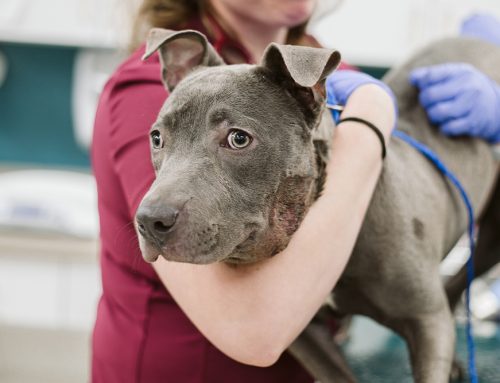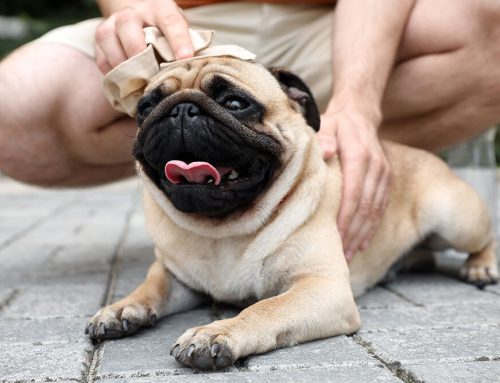Preparing Your Pet for Hiking Season in Flagstaff, AZ
Importance of Gradual Exercise
After a cozy winter, it’s tempting to jump straight into outdoor adventures with your pet. However, a sudden increase in activity can lead to exertional rhabdomyolysis, a condition characterized by the rapid breakdown of muscle fibers. This can be particularly dangerous after your pet has been less active during the colder months. To prevent this, it’s essential to reintroduce exercise gradually.
Signs of Exertional Rhabdomyolysis to Watch For
- Muscle stiffness or weakness
- Reluctance to move
- Dark-colored urine (indicative of myoglobinuria)
- Rapid breathing
- Elevated heart rate
These symptoms can progress quickly. Without intervention, muscle damage can lead to systemic complications, including severe dehydration and electrolyte imbalances.
Assessing Your Pet’s Fitness Level
Assessing your pet’s readiness for increased physical activity is crucial. Consider their general health, age, and current fitness level. If your pet has spent much of the winter indoors, they may have lower endurance and muscle strength. Consult with your veterinarian to determine any specific limitations or health considerations your pet may have.
Tips for a Gradual Hiking Preparation Plan
- Start with short, easy walks and gradually increase the duration and intensity. Introduce varied terrain to strengthen different muscle groups.
- Include rest days to allow your pet’s muscles to recover. Recovery is as crucial as the exercise itself to prevent overuse injuries.
- Monitor your pet’s response to increased activity, adjusting as necessary to avoid overexertion. Look for signs of fatigue, soreness, or any changes in behavior that might indicate discomfort.
Rhabdomyolysis Insights from Veterinary Emergency and Specialty Center of Northern Arizona
Medical Explanation of Rhabdomyolysis in Pets
Rhabdomyolysis involves the breakdown of muscle fibers, resulting in the release of muscle contents into the bloodstream. Complications can include Acute Kidney Injury, which can occur due to the kidneys attempting to filter these substances. Myoglobin, a muscle protein released during rhabdomyolysis, can be damaging to the kidneys, potentially leading to renal failure if not addressed promptly.
Causes and Prevention of Exertional Rhabdomyolysis
Factors contributing to rhabdomyolysis include:
- Overexertion
- Poor conditioning
- Dehydration
- Stress
Preventative Measures
- Ensure adequate hydration and nutrition. Dehydration can exacerbate muscle breakdown, so provide frequent water breaks.
- Avoid intense activities in extreme temperatures. Heat can increase the risk of muscle fatigue and breakdown.
- Gradually increase exercise intensity. A slow build-up allows the muscles to adapt and strengthen.
- For further reading, consider this guideline on How to Help Avoid Exertional Rhabdomyolysis in Bird Dogs, which also applies broadly to other breeds.
Diagnosis and Treatment of Rhabdomyolysis
Diagnosis is based on clinical signs, history of recent exercise, and laboratory tests showing elevated muscle enzymes and myoglobin in the urine. Early detection is critical for effective management.
Treatment involves:
- Immediate cessation of physical activity to prevent further muscle damage.
- Intravenous fluids to maintain hydration and support kidney function.
- Pain management and anti-inflammatory medications as prescribed by a veterinarian.
- Monitoring and supportive care for any complications such as kidney failure.
Outcomes can vary, but with prompt treatment, many pets recover fully. Delays in addressing the condition can lead to significant complications.
Essential Hiking Safety Tips for Pet Owners in Flagstaff
Choosing the Right Trails and Conditions
Flagstaff offers a variety of pet-friendly trails suitable for different fitness levels. Always check trail conditions and weather forecasts to ensure the safety and comfort of your pet. Trails with ample shade and access to water can help prevent overheating and dehydration.
What to Bring on a Hike
A checklist for hiking with your pet should include:
- Fresh water and a collapsible bowl
- Nutritious snacks
- A basic pet first-aid kit
- Your vet’s contact information
For more on potential emergencies, read about heat stroke and trauma.
Recognizing and Responding to Emergencies
First Signs of Rhabdomyolysis and Immediate Actions
Early recognition of rhabdomyolysis can be lifesaving. Signs include apparent discomfort, excessive panting, and dark urine. If you notice these symptoms:
- Stop all activity immediately.
- Provide your pet with water.
- Seek veterinary care promptly to prevent further complications.
When to Seek Veterinary Help
If you suspect your pet is suffering from rhabdomyolysis, it is crucial to seek immediate veterinary attention.

Long-Term Health Management After Rhabdomyolysis
Recovery and Rehabilitation
Recovery involves:
- Adequate rest
- Rehydration
- Monitoring kidney function and overall health
- Gradually reintroducing exercise
Building a Sustainable Exercise Routine
Post-recovery, establishing a safe and effective exercise routine is essential to prevent future episodes. Regular, moderate exercise tailored to your pet’s capabilities is key. For ongoing care strategies, read this article on Preventing Injury in Sporting Dogs.
FAQs
Q: Can rhabdomyolysis occur in all breeds of dogs?
A: Yes, rhabdomyolysis can affect any breed, though active or working breeds may be more prone due to their higher activity levels.
Q: What should I do if I can’t reach a vet immediately?
A: Keep your pet calm and hydrated. Minimize movement and provide shade if outdoors. Continue trying to reach veterinary assistance as soon as possible.
Q: How long does recovery typically take?
A: Recovery can vary depending on the severity but generally ranges from a few days to a few weeks. It’s important to follow your veterinarian’s guidance closely during this period.







Leave A Comment